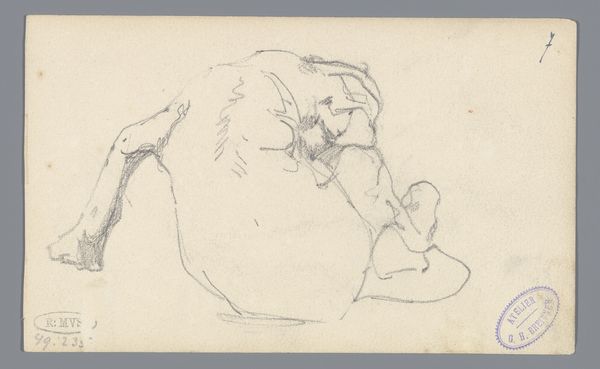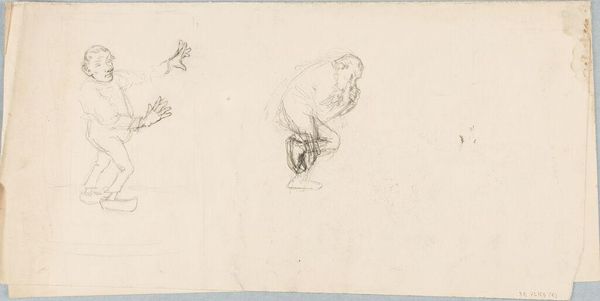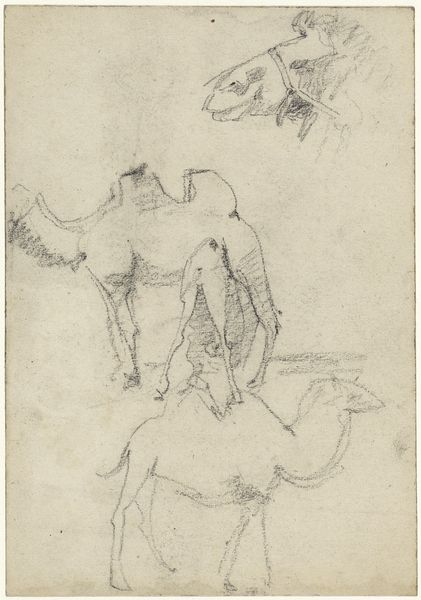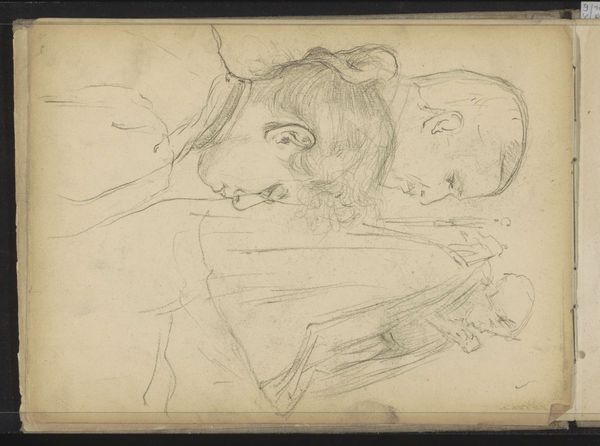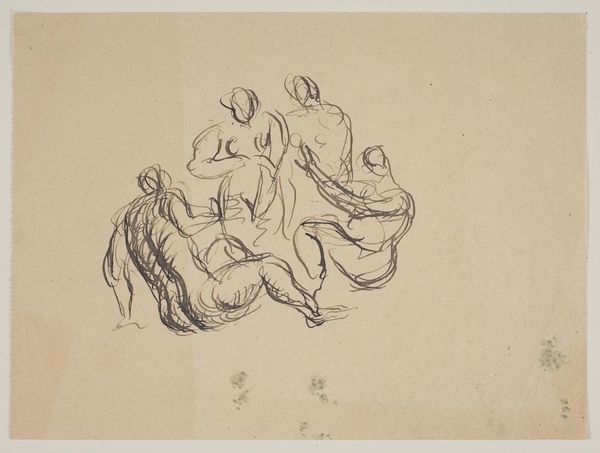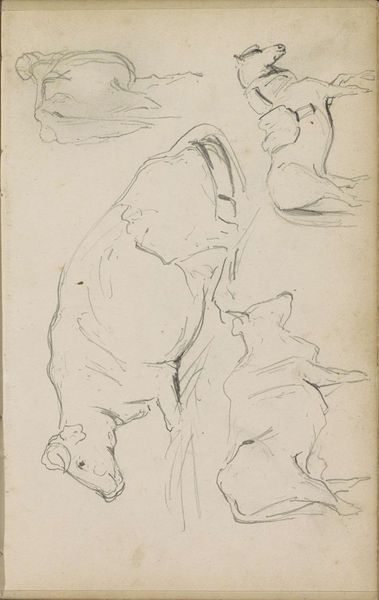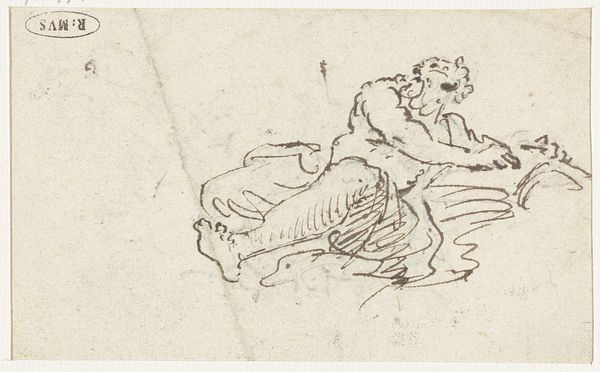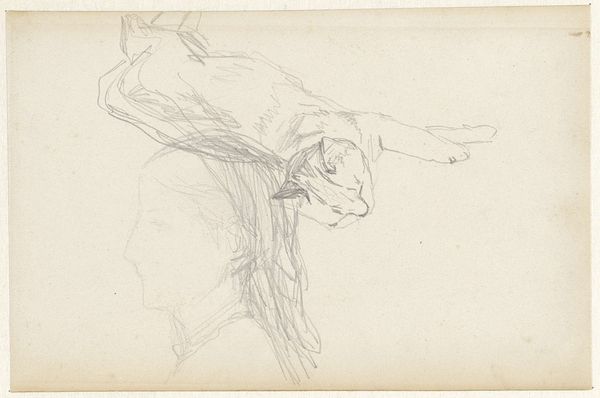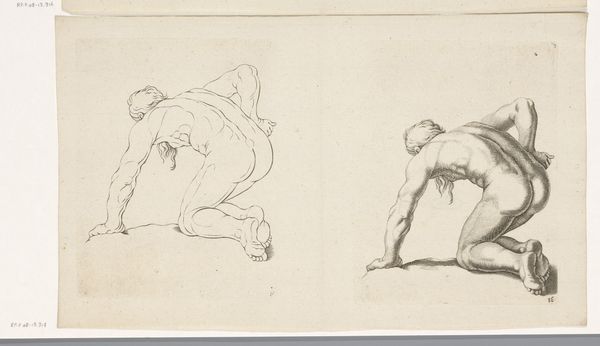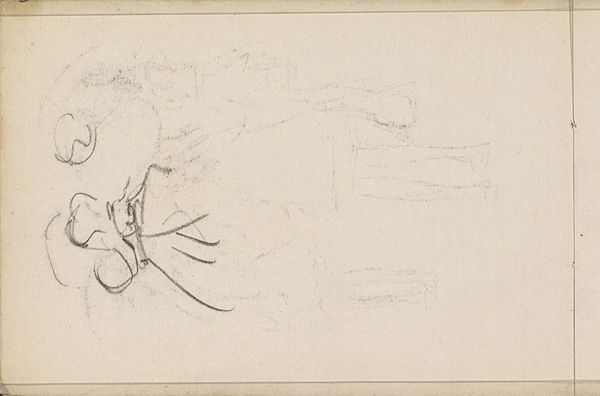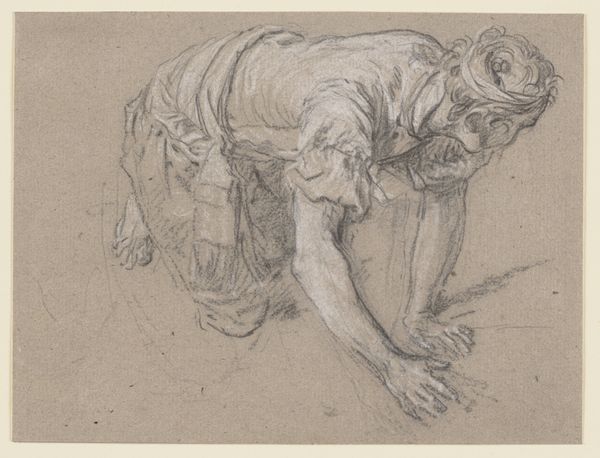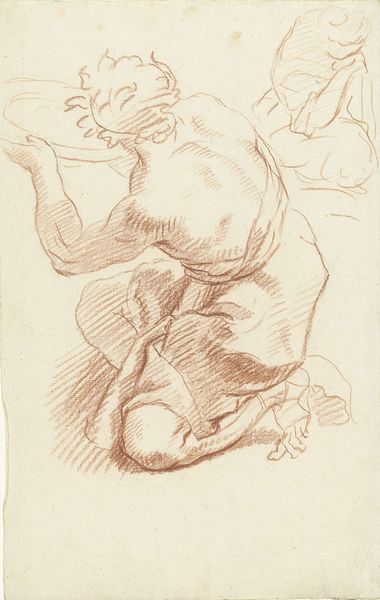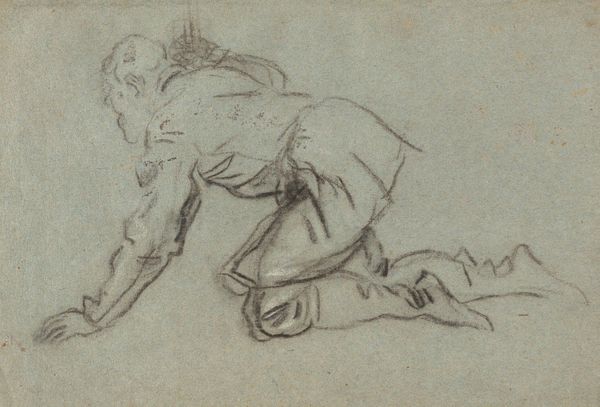
#
pencil drawn
#
amateur sketch
#
toned paper
#
light pencil work
#
pencil sketch
#
personal sketchbook
#
pencil drawing
#
detailed observational sketch
#
portrait drawing
#
pencil work
Dimensions: height 202 mm, width 232 mm
Copyright: Rijks Museum: Open Domain
This sketch of an elephant, foot, and trunk was made by Petrus Camper, sometime in the 18th century and is housed in the Rijksmuseum. Here, the raised trunk is not merely an anatomical feature; it is a potent symbol that resonates across cultures and eras. In ancient Rome, elephants were associated with power and were prominently featured in triumphal processions, where their presence amplified the authority of the victorious leaders. Consider how this motif echoes in Hindu iconography with the deity Ganesha, whose elephant head symbolizes wisdom, understanding, and the removal of obstacles. Yet, even as the symbol travels, its essence transforms, colored by the unique cultural lens through which it is perceived. The recurring image of the elephant evokes a collective memory, tapping into our subconscious awareness of strength. These depictions reflect humanity's enduring fascination with the animal, engaging viewers on a primal, almost instinctual level. The elephant, therefore, is not just an animal, but a symbol that evolves, resurfaces, and adapts in the ever-turning wheel of time.
Comments
No comments
Be the first to comment and join the conversation on the ultimate creative platform.
